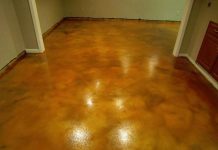Every captain knows there’s nothing worse than your ship engine going cold out in the open. This can turn any idyllic getaway into a terrifying nightmare. The worst part about it is that sometimes there won’t be any warning signs that something might go wrong before you set off. But this is a common situation every ship owner will have to face at some point.
Fortunately, more often than not these problems are easy to fix even if you are not a skilled mechanic. You just need the proper tools, some practical experience and the basic knowledge of how a diesel engine works. If your diesel engine fails to start, the first four things you should check are the power, oil, fuel and air.
The first step to solving the issue is troubleshooting. In order to fix the problem, you must first find out what the problem is. The best way to do this is methodically, following a checklist of most common issues that might cause an engine to fail. This checklist will help you eliminate potential causes and hopefully locate the problem.
Another useful piece of advice comes from experts at PCE Ship Repair Services, the winner of the US Small Business Administration’s Award for Excellence, who suggest: “Keeping a daily maintenance log book will help amass useful data that might prove vital when troubleshooting similar issues. Instead of solving each problem separately, you can use the information about what was previously done. You can see what strategies were used and whether they were helpful. That way, you will avoid repeating useless actions.”
Troubleshooting and Resolving Common Engine Issues
The starting point should always be the power supply. You should first examine if the power and ignition switches are in the proper spot. Check if your battery is fully charged and if there are any loose wires or connections. That might be the reason power is cut from the engine. As a part of regular maintenance, you should make sure that the battery terminals are clean and all the fuses and breakers in working order.
Next, proceed to check the oil and fuel supplies. If needed, refill the oil and fuel tanks. When checking the fuel levels use a dipstick to eliminate the possibility of a malfunctioning gauge. Another common fuel issue is contamination. If the color of the fuel differs from the regular amber or if the fuel has any dark spots afloat you need to drain the supply using a separator to get water or any other contaminants out.
If there’s nothing wrong with your fuel, perhaps the problem is a leak letting air into the fuel supply. To eliminate this possibility you have to vent the air from the tank. Bleed the connections between the pump and the tank and bleed the injectors, as these are the most common places air leaks occur. Finally, if all else checks out, inspect the vents in the engine compartment and the exhaust pipes for any clogs or blockages.
When performing engine repairs the important thing is not to panic and not to take any risks. If you are not sure what a certain part of the engine does or what might happen if you remove it, the rule of the thumb is not to risk it. Instead, use your phone or your radio to look for help.
Find a Home-Based Business to Start-Up >>> Hundreds of Business Listings.

















































